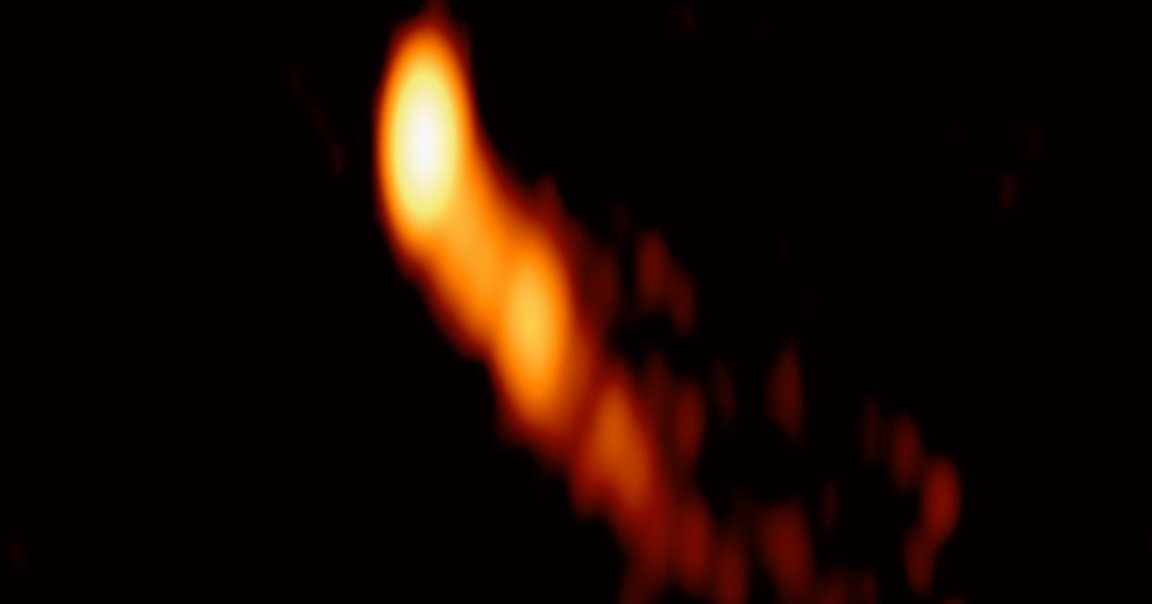
After an international coalition of scientists released the first-ever image of a black hole last year, we now have the ultimate follow-up: a video of a supermassive black hole spewing a brilliant jet of particles.

The video, part of a new research paper published in the journal Astronomy & Astrophysics this week, actually comes from the same observation of the black hole image conducted by the Event Horizon Telescope (EHT) initiative, as Science Alert reports.
The video shows a distant quasar called 3C 279, in the Virgo constellation five billion light-years away from Earth, blasting out “twin fire-hose-like jets of plasma,” according to a statement. A quasar is the extremely bright heart of a galaxy inside of which a supermassive black hole is surrounded by an “accretion disk,” an area of diffuse material spinning around a central body.
These jets leave the black hole at 99.5 percent of the speed of light, thanks to the immense forces involved in the black hole sucking up matter.
To capture the series of images, the team used a new technique called “very long baseline interferometry,” which collects and synchronizes data from a number of radio dishes from around the world, forming “one huge virtual Earth-size telescope.”
EHT then analyzed and combined this data to focus in on distant objects at an astonishing resolution: “20 micro-arcseconds on the sky — the equivalent of someone on Earth identifying an orange on the Moon,” according to the statement.
The researchers were surprised to see the jets arcing unexpectedly, with its shape twisting at the base.
“We knew that every time you open a new window to the Universe you can find something new,” Jae-Young Kim, researcher at the Max Planck Institute for Radio Astronomy (MPIfR) in Germany and lead author of the paper, said in the statement.
“Here, where we expected to find the region where the jet forms by going to the sharpest image possible, we find a kind of perpendicular structure. This is like finding a very different shape by opening the smallest Matryoshka doll,” Kim added.
It’s a massive achievement for the EHT team.
“Last year we could present the first image of the shadow of a black hole,” said chair of the EHT Collaboration Board Anton Zensus. “Now we see unexpected changes in the shape of the jet in 3C 279, and we are not done yet. As we told last year: this is just the beginning.”
READ MORE: Astronomers Just Released an Unprecedented Image of a Jet Shooting From a Black Hole [Science Alert]
More on the black hole image: Scientists Just Released the First-Ever Image of a Black Hole